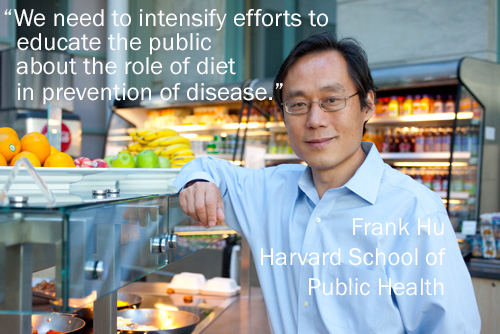Should Food Stamps Incentivize Healthy Eating?
By:
There is a widening economic gap between the rich and the poor and their access to healthy food. A recent study by the Harvard School of Public Health tracked the eating habits of more than 29,000 Americans over the course of 12 years. They found that the richer you are, the better food you eat. While income and access to healthy foods contributes to the food gap, education about the role diet plays in the preventable diseases that plague low-income Americans is just as important.

Before we make the case for implementing widespread, tax-supported health programs to close the food gap, let's take a look at what the government already spends on treating diet-preventable diseases. Since 2013, 22% of the federal budget was spent on Medicaid. The majority of Americans on Medicaid are in worse health than those on private insurance. Plus they are more likely to be plagued by obesity and other diet-preventable diseases and conditions. Not to mention that the total estimated financial burden of diabetes, a mostly diet-preventable disease, in 2012 was $245 billion dollars. Medicaid is becoming such a huge cost that it is cutting into state and federal spending on education (which is currently 1% of the federal budget). So what does this mean for you? The worse the food gap gets, the more we all pay.
“Collective actions, such as legislation and taxation, that aim toward creating an environment that fosters and supports individuals' healthful choices are more effective at reducing dietary [disease] risk factors than actions that solely depend on personal responsibility.” -Harvard School of Public Health
Overall, the food quality in the American diet has improved over the years. We don't eat as much trans fat and we are eating more whole fruits and grains. By focusing on quality over quantity, we could see a real change after this study. Dr. Frank Hu, leader of the study, suggests using the Supplemental Nutrition Assistance Program (SNAP) to incentivize healthy food purchases. Right now anything that is considered a calorie--healthy or not--can be purchased through SNAP. When I used SNAP benefits, I must admit I was nervous about buying some of the foods that I knew were bad for me. It was like Big Brother was watching and secretly judging me, but the processed food went further than healthier food. If SNAP offered a discount on nutritious foods, it would have empowered me to buy healthier products. Using SNAP may be a slow process to get people eating better but it's a good place to start. Also, for the state of New York, the Medicaid card is the same as the SNAP card. Ironically, this demonstrates the close ties between unhealthy food and the medical costs you might pay for it later. Once we move towards a society that sees the importance of educating and creating a healthy environment for all Americans, maybe, just maybe the food gap will shrink and the financial burden lighten. But, as Dr. Hu puts it, “We still have a long way to go."
